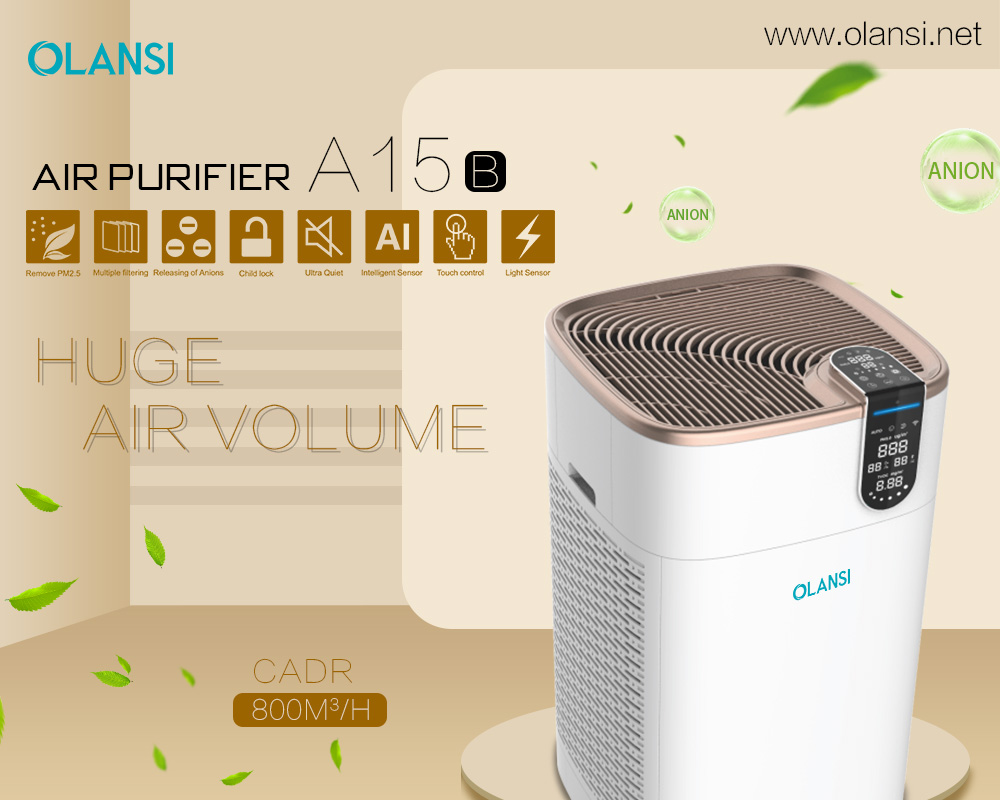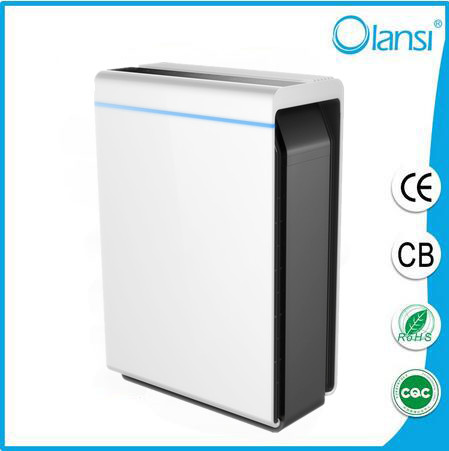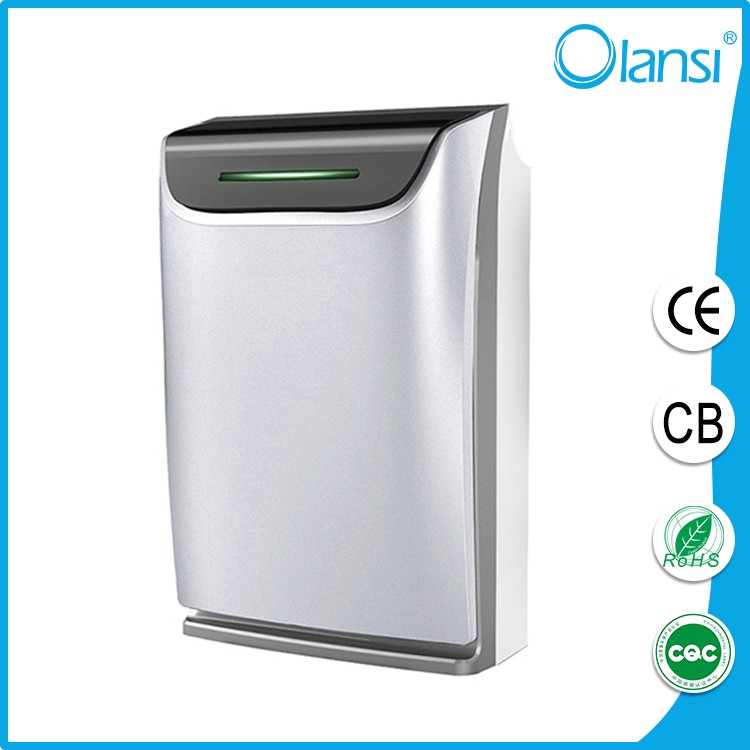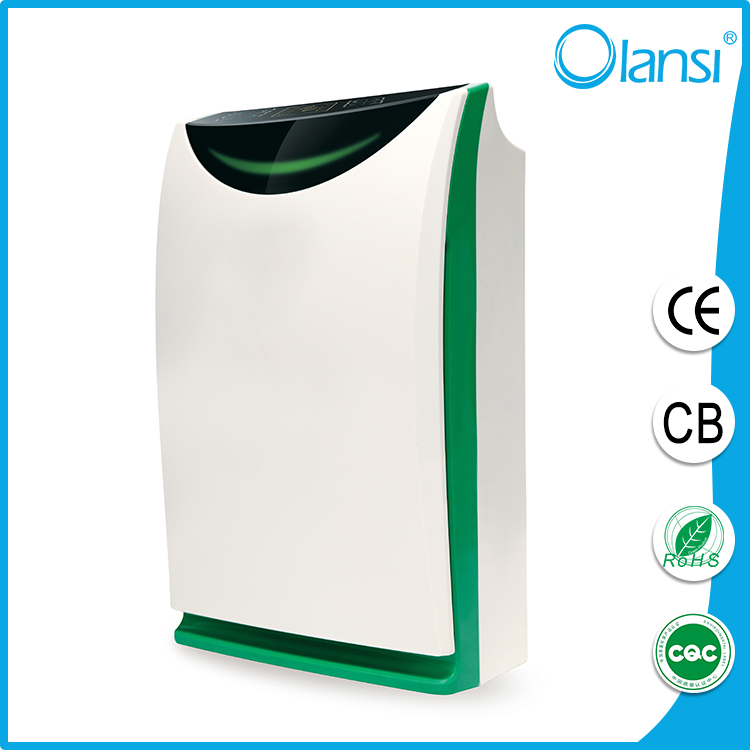We’re glad you asked! After being introduced to air purifier technology you might wonder, “This is great, but what does my home air purifier actually do?” It’s a great question; understanding what air purifiers do is important for picking the right one.
To Put it Simply: Air Purifiers Clean the Air
Air purifiers clean your air by passing it through a filtering process that is targeted at removing one or more types of pollutants—dust, allergens, odors, chemicals, and so on.

Olansi K15B Air Purifier
What the best air purifier has
- HEPA filtration. HEPA filtration is regarded by experts as the most effective type of filtration for removing allergens and small particles from the air. Other filters are designed to mimic this effectiveness, but few achieve the ability to remove particles down to 0.1 microns in size or smaller.
- High maximum air-exchange rate. Maximum air-exchange rate refers to the amount of air an air cleaner is capable of passing through its system in a minute. Air purifiers with higher maximum air-exchange rates will clean the air faster than those with lower rates.
- Filter-change alert. Many air purifiers come with a counter to let you know when it’s time to change the filter. Some operate on a daily-countdown basis, while others actually base this information on the state of the filter.
- Dust sensor or air-quality monitor. A few air purifiers have automatic sensors to detect how polluted the air is, with the ability to adjust the purifier’s cleaning speed accordingly without manual intervention. This, of course, provides users with less precise control over energy consumption and noise levels, but it’s a useful feature if you’ll be using an air purifier in a non-occupied space.
- Several fan speeds. Most air purifiers have multiple fan speeds, which adjust the speed at which the air is cycled through the unit. There’s a direct correlation between higher fan speeds and more noise, however.
- Large capacity. If you need an air purifier for a small space, more affordable options are practical. But for larger rooms, you’ll need to purchase a more expensive model capable of handling more square footage.
- Reasonable cost of ownership. Most air purifiers have long-life filters that must be replaced every three to five years. Some models have more than one filter, while others come with a permanent filter meant to be vacuumed periodically instead of replaced. The more frequently you have to replace the filter, the more it will cost you over time.
- No or very low ozone. Experts say that ozone is effective in neutralizing odors and chemical gases. They also say that this is a classic case where the cure is worse than the disease as high-levels of ozone can be toxic. If you opt for an electronic air purifier, chose a design that emits low or, better still, no ozone. Skip ozone generators sold as air cleaners altogether.
Know before you go
Do you want a whole-house or room air purifier? Experts say that a room air purifier might not be necessary for most individuals. Some owners say they’ve experienced significant relief from allergy symptoms with the use of a $25 furnace filter that works with an existing household unit.
Do you have severe allergy or asthma symptoms? Owners and experts agree that for individuals suffering from severe allergy or asthma symptoms, the investment in top-of-the-line air purifiers is worth it. But if you suffer from only mild symptoms or simply want to reduce smoke or pet dander in your home, a more affordable model can do the trick.
How much space do you have? Air purifiers can be heavy and bulky, with some requiring a few feet of clearance on all sides. Be sure to measure your available space and allow for all space considerations before you buy.
What room will you use an air purifier in? If you’re planning to use an air purifier in your bedroom, for instance, you’ll want to choose a model with a noise level that you can tolerate while sleeping. In living spaces, choose an air purifier with adjustable speed settings so you can turn it up to a higher setting when you’re not in the room to be disturbed by the noise.
Value expectations: The dollars and cents of it
Air purifiers aren’t cheap to own. Many cost several hundred dollars up front, and most replacement filters are fairly expensive — some cost as much as $100 for the HEPA filter, with additional costs for prefilters and carbon filters. Some air purifiers require more frequent filter replacements, which adds to the cost over time. Owners suggest purchasing multiple filter packs online to save money. For those suffering from severe allergies or asthma, the cost is often worth it, and you may be able to purchase it with FSA funds with the proper documentation from your medical professional. Others should try more affordable options, such as furnace filters, which cost significantly less and can be just as effective for most people. While there aren’t a lot of complaints about malfunctioning air purifiers, many models offer warranties of five years for peace of mind. Also, keep in mind that if you can hunt down and eliminate sources of allergens and odors, you might be able to do without an air purifier altogether.





